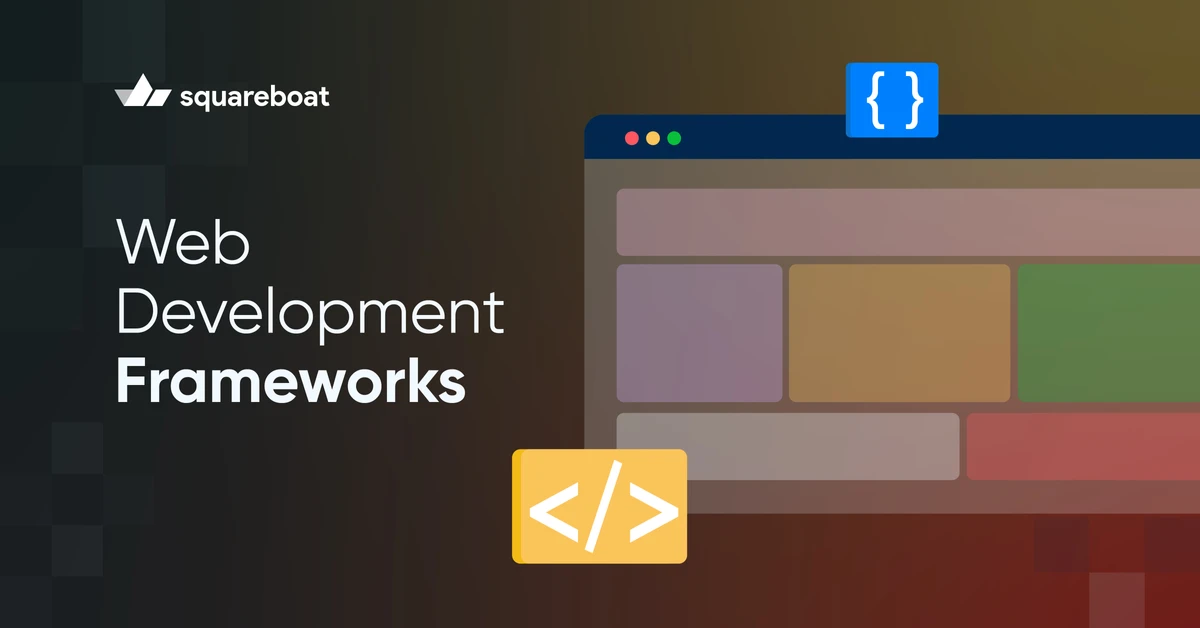Imagine building a massive skyscraper without blueprints or structural guidelines. Chaos, right? That’s how web developers would feel without web development frameworks. These frameworks serve as structured blueprints, guiding developers to create scalable, robust, and efficient web applications. They streamline repetitive tasks, enable modular coding, and ensure consistency across complex projects. This article will look at the top frameworks for web development and what they can do.
What are Web Development Frameworks?
Web development frameworks are key tools that make it easier to build a web application. They give developers a clear path to create dynamic and interactive websites that can handle scalability. These frameworks come with pre-built modules, templates, and libraries that speed up coding. This lets developers spend more time on new features instead of starting everything from the ground up.
Web Application Frameworks come in three types: frontend, backend, and full-stack. Frontend frameworks build user interfaces, while backend frameworks manage server-side logic. Full-stack frameworks do both aspects of the job to provide complete solutions. Using a framework speeds up development and impacts consistency and maintainability in the code.
Web development frameworks excel at handling everyday tasks like routing, database integration, and authentication. This saves developers time and reduces the risk of errors. These frameworks enable development teams to focus on new ideas and performance rather than starting from scratch.
Choosing the best framework for web development depends on project requirements and the developer's expertise. Some frameworks are light and adaptable, while others pack robust tools for intricate apps. No matter which one you pick, web app frameworks lay a strong groundwork to build fast, high-performance websites.
Top 10 Frameworks for Web Applications
Web development frameworks make it easier to build complex apps by offering pre-built components, libraries, and best practices. Picking the right web development framework can accelerate development, increase productivity, and support your project's growth. Here's a list of the best frameworks for web development in 2026.
1. React (JavaScript)
React, created by Meta, is a top front-end library for building dynamic and responsive user interfaces. It uses a component-based structure to help developers create self-contained components that manage their own state. React's virtual DOM ensures fast updates and rendering, which makes it a solid pick for high-performance apps. Its ecosystem supports libraries like Redux to handle state and React Router to manage navigation.
- Component-based architecture: Enhances modularity and reuse, helping developers handle complex interfaces.
- Virtual DOM: Speeds up performance by reducing direct manipulations of the actual DOM.
- Rich ecosystem: Offers wide-ranging support for external libraries, which enables developers to add new features.
Community support: A large and active community keeps the library current and provides numerous resources.
2. Angular (JavaScript)
Angular, a robust front-end framework maintained by Google that employs TypeScript to implement static typing. This addition of static typing to JavaScript cuts down on runtime errors. The MVC architecture and two-way data binding in Angular allow smooth synchronization between the model and the view. Developers often choose it to build expansive single-page applications (SPAs).
- TypeScript support: Static typing helps to cut down on mistakes.
- Two-way data binding: This feature allows the UI and model to stay in sync as things happen.
- Dependency injection: This makes apps easier to split up and grow.
Command Line Interface (CLI): Built-in tools simplify the development process.
3. Vue.js (JavaScript)
Vue.js stands out as a lightweight and flexible framework that coders use to create interactive web apps. It blends the best parts of Angular and React but keeps things easy to pick up. Vue’s reactivity system efficiently tracks changes and updates the DOM only where necessary.
- Flexible integration: Fits into existing projects without big changes.
- Single-file components: Keep code tidy and simple to handle.
- State management with Vuex: Manages complex data flows well.
Comprehensive documentation: Makes learning and implementation easy.
4. Django (Python)
Django stands out as a high-level back-end framework famous for its sleek design and quick development tools. It sticks to the DRY (Don't Repeat Yourself) rule and pushes for modular reusable code. Django's ORM lets you work with databases without writing SQL queries, which makes handling data a breeze.
- Admin interface: Automatically generated for backend management.
- Built-in authentication: Simplifies user management.
- Security features: Protects against common vulnerabilities like SQL injection and XSS.
RESTful support: Django REST framework for building APIs.
5. Flask (Python)
Flask is a micro-framework that suits lightweight modular applications. Unlike Django, it allows developers to make architectural choices. Flask's straightforward design and ease of use make it a solid option for small to medium-sized projects.
- Minimalist approach: Keeps the basics simple but lets you add extras.
- Built-in server: Makes quick testing and fixing problems a breeze.
- Versatile routing: Handles web addresses well.
Integration-friendly: Plays nice with front-end tools and databases.
6. Laravel (PHP)
Laravel is a robust back-end framework that follows the MVC pattern. It shines with its clear syntax and built-in tools for routing, user checks, and saving data. Laravel's ORM Eloquent helps you work with databases without hassle.
- Blade templating engine: Creates dynamic views without hassle.
- Artisan CLI: Automates repetitive tasks.
- Built-in authentication: Simplifies role management.
RESTful routing: Streamlines API development.
7. Spring Boot (Java)
Spring Boot simplifies Java-based application development. It provides an embedded server and sets up configurations. It excels in microservices, which allow developers to build stand-alone applications.
- Auto-configuration: Reduces setup time.
- Embedded server: Supports Tomcat or Jetty for quick deployment.
- RESTful web services: Efficient API creation.
Spring Data: Eases database connectivity.
8. Ruby on Rails (Ruby)
Ruby on Rails prioritizes conventions over configuration, which speeds up developer productivity. It excels at building MVPs and prototypes. Rails adopts an MVC pattern that separates different components to enhance maintainability.
- Active Record: Simplifies database interactions.
- Convention-driven: Reduces configuration requirements.
- Integrated testing: Built-in tools for code validation.
Easy database migration: Manages changes efficiently.
9. ASP.NET (C#)
ASP.NET functions as a mature platform to develop web apps within the Microsoft ecosystem. It offers robust security and performance features, which make it suitable for enterprise-level applications.
- Built-in security: Authentication and authorization features.
- Scalability: Handles large, complex applications.
- RESTful API support: Enhances backend integration.
Azure integration: Cloud support for deployment.
10. Express.js (JavaScript)
Express.js works as a basic backend framework for Node.js. Coders often use it to create RESTful APIs and microservices.
- Lightweight structure: Ideal for microservices.
- Asynchronous processing: Efficient handling of multiple requests.
- MongoDB compatibility: Works well with databases using Mongoose.
Real-time support: Suitable for applications requiring live updates.
Conclusion
Web development frameworks play a key role in building strong and scalable applications efficiently. They simplify repetitive tasks, improve code organization, and cut down development time. This article looked at what are frameworks in web development, and some of the top frameworks such as React, Angular, Vue, Django, and many others, also showing their unique features and strong points.
As the web technologies scene changes, frameworks will keep up by incorporating new trends and tackling new hurdles. Picking the best framework for web development always hinges on what your project needs and the specific aims you want to reach. Using the right framework gives developers the power to build faster, more dynamic, and future-ready applications.
People are Also Reading:
- Software Testing Strategies
- Python: Advantages and Disadvantages
- What is DevOps?
- How to become a SQL Developer?
- Front End Developer Skills


